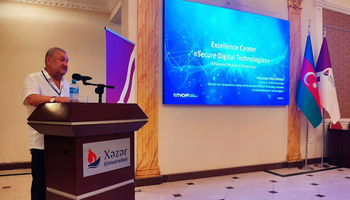International Researcher at TUSUR to Develop Safe Antipyrene for Fire-Resistant Treatment of Flammable Radar-Absorbent Materials
A group of TUSUR researchers lead by an international faculty member will develop safe antipyrene for protection of flammable radar-absorbent materials with the support from the Presidential Program for Research Projects of the Russian Science Foundation.
The Russian Science Foundation has supported a project of TUSUR University for «Development of Antipyrene Treatment for Production of Elastic Polyurethane Foam-Based Fire-Resistant Radar-Absorbent Materials», lead by Visakh Puthenpurackalchira Maniyan.
The research will be focused on finding a way to achieve fire-resistance of radar-absorbent materials that are widely used in production of anechoic chambers. These chambers are designed to be used for measurement of radio-technical properties of radiation systems, and for electromagnetic compatibility testing of radioelectronic devices. Research companies and laboratories use such chambers to test antennas, industrial equipment, aircraft and spacecraft equipment, and unmanned aerial, ground and waterborne vehicles.

TUSUR researchers are now developing antipyrene – fire-retardant treatment that would ensure long-term protection of flammable materials, making them fire-resistant while having a minimal impact on their radar-absorbent properties. The new treatment is non-toxic and can be used to treat chambers that are already in use. The University has its own anechoic chamber and TUSUR engineers say that the new antipyrene treatment will help enhance the safety of its operation. Moreover, the new treatment can be used on the regular PU foam that is used in furniture and children’s play facilities.
The project builds on previous developments of TUSUR together with its industrial partner TESART, solution provider for automation in measurements, research and production. The company made its facilities available for experimentation. With support from the Russian Science Foundation, the project will make the best of the synergy of this collaboration. The project is expected to be completed in two years.



.png)


